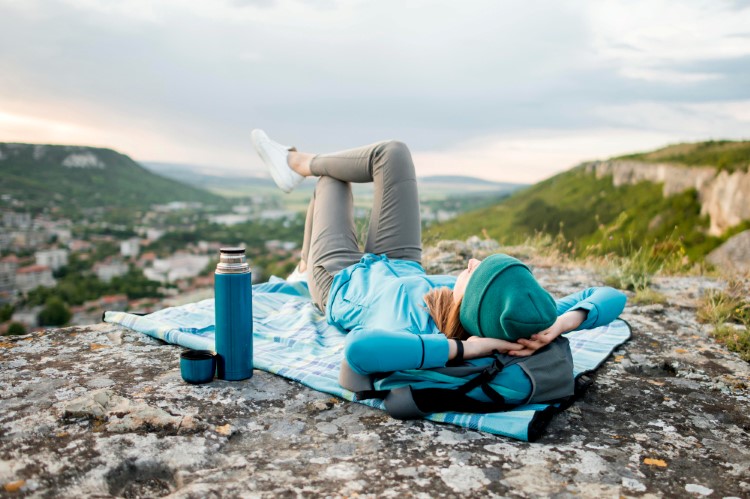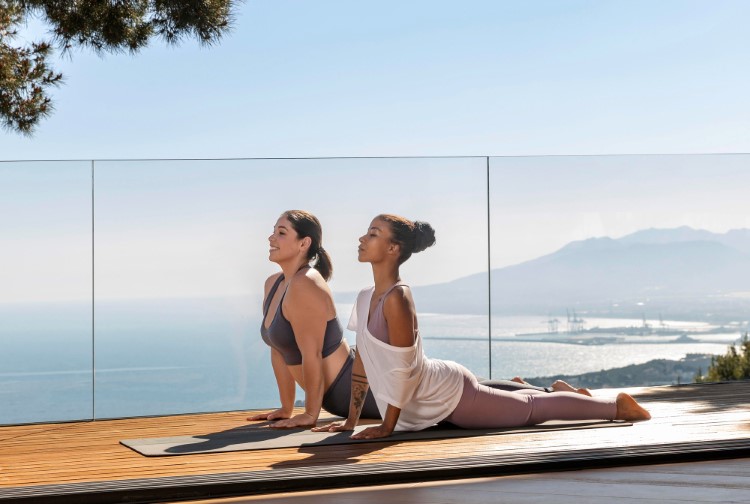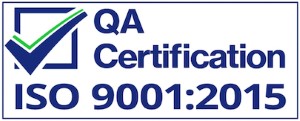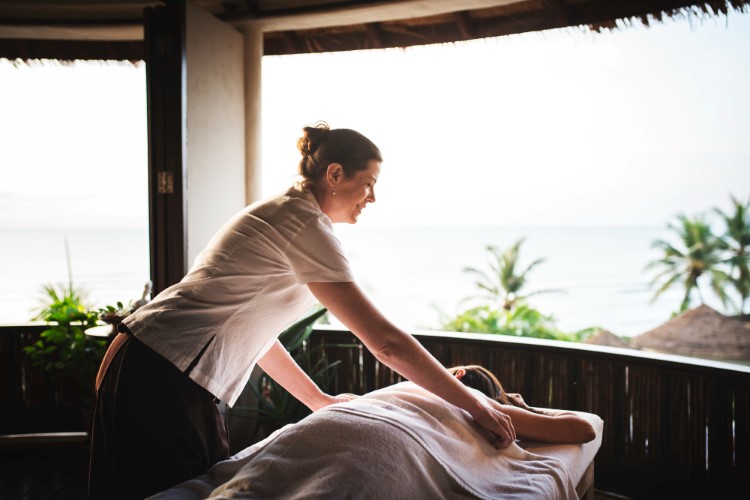Table of Contents
Plan a wellness trip and step into a transformative journey where your well-being takes center stage. Today, in a hyper-connected world, wellness travel has shifted from being a luxury to an absolute necessity. More and more travelers are on the lookout for healing and mindful getaways that provide rest, rejuvenation, and a chance to reconnect with themselves. Whether it’s a peaceful yoga retreat or an invigorating fitness holiday, organizing a wellness retreat is all about making self-care a priority.
The recent numbers tell a compelling story, by 2025, the global wellness tourism market is projected to reach a staggering $1.3 trillion, while the overall wellness industry is expected to soar from $4.4 trillion to $7 trillion. This surge in interest shows that wellness tourism isn’t just a passing trend, it’s a significant lifestyle movement.
In this guide, you’ll discover how to plan your wellness trip step by step, from selecting the perfect destination and packing the essentials to diving into wellness activities that truly nourish your body and soul and everything in between. Make yourself comfortable as you sip a cup of coffee and prepare to explore some interesting ways of planning your wellness trip, step by step!
What is Wellness Travel?
Wellness travel is a growing trend in tourism that focuses on enhancing or maintaining one’s personal health and well-being while away from home. This can involve a wide range of healing activities such as yoga retreats, meditation workshops, spa treatments, fitness bootcamps, nature-based escapes, and healthy eating programs. Unlike traditional vacations centered around sightseeing or leisure, wellness travel is intentionally designed to support mental, physical, and emotional wellness.
Interesting Facts and Stats About Wellness Travel
According to the Global Wellness Institute, wellness tourism is defined as travel associated with maintaining or enhancing one’s well-being. It includes both domestic and international trips that prioritize health-conscious experiences, and the sector is one of the fastest-growing segments in the tourism industry.
- The global wellness tourism market was valued at USD 880 billion in 2023 and is projected to surpass USD 2.3 trillion by 2033.
- In 2023, international wellness tourists spent an average of $1,668 per trip, which is 36% more than the average international tourist.
- Europe led the market in 2022 with over 300 million wellness-focused trips, followed by the Asia-Pacific region with around 242 million, and North America with 213 million.
Why Wellness Travel Matters
Wellness travel isn’t just a luxury, it’s a response to the rising global need for stress relief, mental clarity, and holistic healing. In today’s fast-paced world, many travelers are seeking more meaningful and restorative experiences. Engaging in healing and wellness-focused travel can improve mental health, promote longevity, and enhance physical well-being. Popular options include forest bathing in Japan, Ayurvedic retreats in India, thermal spa experiences in Hungary, and detox retreats in Thailand.
Understanding Your Wellness Goals
Before you dive into planning a wellness trip or retreat, it’s crucial to take a step back and really think about your personal wellness goals. Are you after a mental reset, some physical rejuvenation, spiritual clarity, or maybe some nutritional advice? Figuring out your “why” is key to transforming your experience into something truly meaningful and lasting.
Wellness travel is a deeply personal journey, what resonates with one person might not resonate with another. So, take a moment to ask yourself:
- Are you feeling burned out and in desperate need of some rest?
- Dealing with anxiety or emotional fatigue?
- Hoping to reconnect with your inner self?
- Looking to shake up your eating habits or do a detox?
Each of these reflections can help you align your intentions with the kind of retreat or wellness travel experience that’s just right for you. Before we get to planning, let’s look at the core categories of wellness, This will assist in better understanding wellness trip planning.

The Four Core Wellness Categories
Physical Wellness
Focus: Rejuvenation through movement, rest, and bodywork.
When it comes to wellness travel, physical wellness often takes center stage. Whether you’re into yoga, hiking, fitness boot camps, or indulging in spa therapy, there’s something for everyone. The Global Wellness Institute notes that wellness travelers are 2.5 times more likely to engage in physical activities compared to regular tourists.,
Look for retreats that incorporate daily movement, everything from gentle stretching and nature walks to more intense workouts, while also providing opportunities for rest and recovery through massages, sleep therapy, or relaxing in hot springs.
Best for: Stress relief, physical fatigue, poor sleep, muscle tension.
Mental & Emotional Wellness
Focus: Emotional balance, stress reduction, and mental clarity.
With burnout, anxiety, and digital fatigue on the rise, many travelers are turning to healing mental wellness retreats. These can include mindfulness workshops, therapy sessions, digital detoxes, or simply soaking in the tranquility of nature to help calm a racing mind.
The American Psychological Association reported that 79% of adults felt stress related to the pandemic in 2023, highlighting the ongoing need for emotional support.
Best for: Overwhelm, anxiety, burnout, emotional fatigue.
Spiritual Wellness
Focus: Inner peace, connection, and purpose.
Spiritual wellness isn’t just about religion; it’s often about the desire to connect with something bigger than ourselves. Retreats in this area might feature meditation, breathwork, silent retreats, or visits to sacred sites.
Experiencing immersive spiritual journeys is becoming increasingly popular, with retreats in places like Bali, India, and Sedona offering everything from chakra healing to guided inner explorations.
Best for: Seeking meaning, clarity, mindfulness, or deeper connection.
Nutritional Wellness
Focus: Healing the body through mindful nourishment.
Nutrition-focused retreats are perfect for resetting your eating habits, exploring plant-based lifestyles, or trying out detox programs. With nearly 60% of people around the world saying that healthy eating affects their mental and physical well-being, it’s clear that food plays a huge role in the wellness scene.
These retreats typically offer cooking classes, one-on-one consultations with nutritionists, and delicious, organic meals.
Best for: Detoxing, building healthy habits, tackling digestive issues, and boosting energy.
Matching Goals with Intensity
Gentle Retreats vs. Immersive Experiences
Once you’ve figured out your focus, the next step is to choose the right level of intensity. Ask yourself:
- Do I want to just dip my toes in, or am I ready to go all-in?
- Do I need a relaxing break or a complete transformation?
Gentle retreats might feature light yoga, spa treatments, nature walks, and guided meditation, perfect for first-time wellness travelers or anyone looking for some rest.
On the flip side, immersive experiences could include silent meditation, fitness boot camps, plant medicine ceremonies, or multi-day fasts, ideal for those who are ready to dive deep into transformation.
According to the Global Wellness Tourism Economy report, wellness trips that include immersive elements often lead to longer stays and higher spending, showcasing the depth and impact they provide.
Finding the Perfect Wellness Destination
Choosing the perfect spot when you plan a healing and wellness Trip is a crucial part of the planning process. A top wellness travel destination that’s “wellness-friendly” creates a setting that promotes health and well-being, featuring stunning natural landscapes, a peaceful atmosphere, and a variety of wellness options like spas, yoga studios, and healthy dining choices. Plus, factors like accessibility, safety, and local culture make these places even more attractive.
With the wellness tourism market expected to hit around $1.213 trillion by 2025, highlighting the increasing global focus on health-oriented travel, here are five fantastic wellness destinations to think about as you plan a wellness trip in 2025:
Ubud, Bali – Mindfulness & Yoga
Ubud, often seen as the cultural heart of Bali, has become a go-to destination for mindfulness and yoga retreats. The town is filled with a variety of yoga studios, meditation centers, and holistic healing practitioners, all set against the stunning backdrop of lush rice terraces and peaceful landscapes. In 2023, Bali welcomed over 5 million international tourists, with a large number drawn to its wellness offerings. Surveys show that 23.2% of visitors to Bali are keen on relaxation activities such as spa treatments, yoga, and meditation. Popular places for meditation include The Yoga Barn, Radiantly Alive, and Taksu Healing Haven, each offering serene environments and guided mindfulness sessions surrounded by nature.
Sedona, Arizona – Energy Healing & Spirituality
Sedona is famous for its breathtaking red rock formations and is thought to be a hub of powerful energy vortexes, attracting those on a quest for spiritual awakening and healing. The area boasts a range of wellness retreats that focus on meditation, energy healing, and personal growth. By 2025, Sedona is set to be at the forefront of mindful travel, offering a unique mix of nature, healing energy, and wellness experiences. For a deeper spiritual experience, visitors can meditate at Cathedral Rock Vortex, Bell Rock, or attend retreats at Sedona Mago Retreat Center, known for its energy balancing and holistic programs.
Tuscany, Italy – Culinary & Cultural Wellness
Discover the beauty of Tuscany, Italy, where the rolling hills, lush vineyards, and charming historic villages create the perfect backdrop for wellness retreats. Here, you can enjoy a mix of physical activities like hiking and cycling, all while savoring delicious culinary experiences. Picture yourself indulging in farm-to-table meals, sipping on exquisite wines, and taking part in cooking classes that not only nourish your body but also immerse you in the local culture. Tuscany also offers peaceful meditation experiences in historic settings like the Eremito Hotelito del Alma, nestled in a restored monastery, or the tranquil gardens of Villa Lena where mindfulness and creativity intersect.
Costa Rica – Adventure-Based Rejuvenation
As you plan a wellness trip, let’s head over to Costa Rica—a paradise for adventure seekers! With its stunning rainforests and beautiful beaches, this country is a top choice for those looking to combine adventure with wellness. You can try your hand at surfing, zip-lining through the treetops, or hiking scenic trails, all while enjoying yoga retreats and eco-friendly lodges that prioritize sustainability. Costa Rica’s dedication to preserving its natural wonders enhances the rejuvenating experience for every visitor. Notable meditation retreats include Blue Spirit in Nosara, PachaMama Eco Village, and Samasati Nature Retreat—each offering profound spiritual immersion in pristine, natural environments.
Maui, Hawaii – Holistic Nature-Based Wellness
Maui is a true haven for holistic wellness, featuring breathtaking beaches, dramatic volcanic landscapes, and a rich cultural heritage. Here, you can dive into activities like snorkeling, explore bamboo forests on foot, or participate in traditional Hawaiian healing ceremonies. Many wellness retreats in Maui beautifully blend the island’s natural splendor with its cultural roots. For example, the BPM Wellness Maui Retreat in August 2025 promises an immersive experience that combines movement, mindfulness, and deep connections with others. Other well-known spots for mindful retreats include Lumeria Maui, nestled in the hills of Upcountry Maui, and Hale Akua Eco-Retreat overlooking the jungle valleys near Hana.
Thailand – Breathe, Heal, and Thrive
Thailand’s stunning landscapes and peaceful retreats create the perfect backdrop for holistic, nature-inspired wellness experiences. Whether you’re exploring the misty mountain sanctuaries of Chiang Mai or relaxing in the serene beachfront spots of Phuket and Koh Samui, every part of this beautiful country encourages you to take a step back and reconnect with yourself. Dive into revitalizing spa treatments that draw from ancient Thai healing traditions, enjoy sunrise yoga sessions by the crystal-clear waters, and savor delicious organic meals made with local herbs and superfoods. Popular meditation centers include Wat Suan Mokkh in Surat Thani, Dipabhavan Meditation Center in Koh Samui, and The Pavana Chiang Mai Resort, each offering structured mindfulness retreats deeply rooted in Thai Buddhist traditions. Whether you’re seeking deep relaxation, a physical detox, or a spiritual refresh, Thailand’s wellness sanctuaries offer a beautiful mix of balance, serenity, and healing.

The Most Popular Techniques in Meditation and Alternative Therapy
As we all start to embrace a more mindful and balanced way of living, it’s fascinating to see how ancient practices and contemporary healing methods are weaving their way into our everyday lives. From deep meditation to vibrational therapies, folks around the world are exploring holistic approaches to ease stress, regain balance, and reconnect with their inner selves. Here’s a handy guide to some of the most popular and effective techniques in meditation and alternative therapy that are making waves today.
Mindfulness Meditation
Mindfulness meditation has really taken off as one of the most popular forms of meditation globally. With its roots in Buddhist traditions, this practice encourages you to observe your thoughts, feelings, and physical sensations without any judgment. It’s a fantastic way to boost self-awareness, ease anxiety, and sharpen your mental clarity. Research indicates that mindfulness can significantly reduce cortisol levels and enhance emotional resilience.
Popular spots: Ubud (Bali), Chiang Mai (Thailand), Sedona (Arizona)
Transcendental Meditation (TM)
Transcendental Meditation is all about quietly repeating a personalized mantra for about 15 to 20 minutes, twice a day. This method is celebrated for its simplicity and effectiveness in soothing the nervous system and alleviating stress. There’s solid scientific backing for TM, and it’s been shown to help with issues like insomnia, anxiety, and even managing blood pressure.
Favored by: Corporate wellness programs, celebrities, and stress-relief retreats.
Guided Visualization
Also referred to as guided imagery, this technique harnesses mental images to foster relaxation, healing, and self-awareness. Typically led by a therapist or through an audio guide, it might involve picturing serene landscapes, setting personal intentions, or visualizing healing energies flowing through your body. It’s particularly beneficial for those grappling with trauma or chronic pain.
Sound Healing
Sound healing taps into vibrational frequencies to help calm both the mind and body. It employs tools like Tibetan singing bowls, crystal bowls, tuning forks, and even gongs to create deep meditative experiences and harmonize the body’s energy centers, known as chakras. Nowadays, sound baths have become a favorite at wellness retreats and yoga festivals around the globe.
Fun fact: Some frequencies, like 432 Hz, are thought to encourage cellular regeneration and emotional release.
Reiki
Reiki is a Japanese energy healing practice where a practitioner channels universal life energy through their hands to the person receiving it. This gentle, non-invasive technique aims to balance the body’s energy field, alleviate stress, and foster healing. Many people leave their sessions feeling profoundly relaxed, grounded, and emotionally lighter.
Best for: Emotional healing, chronic fatigue, and clearing energetic blockages.
Breathwork
Breathwork encompasses a variety of practices, from controlled deep breathing to more intense methods like holotropic breathwork. These techniques are designed to help release pent-up emotions, detoxify the body, and enhance mental clarity. Breathwork is frequently utilized in trauma healing, spiritual awakening, and stress relief programs.
A popular approach: The Wim Hof Method, which combines breathing exercises, cold exposure, and mindset training.
Somatic Therapy
Somatic therapy is all about bridging the gap between the mind and body to tackle trauma and emotional pain. It uses techniques like mindfulness, breath awareness, and physical movement to help release the tension that gets trapped in our bodies. More and more therapists are turning to this approach, especially for those grappling with PTSD and anxiety disorders.
Crystal Healing
People often believe that crystals hold vibrational energy that can connect with our body’s energy field. Each type of crystal serves a different purpose, like amethyst for promoting calmness, rose quartz for attracting love, and black tourmaline for offering protection. While there’s no scientific backing for these claims, many folks say they feel a sense of grounding and emotional support when they work with crystals.
Aromatherapy
Aromatherapy harnesses the power of essential oils derived from plants to help with emotional balance, improve sleep, and relieve stress. Oils such as lavender, eucalyptus, and frankincense are popular choices, often used during massages, baths, or meditation sessions. When paired with breathwork or massage, aromatherapy can really elevate the relaxation experience.
Choosing the Right Retreat
When you’re planning a wellness trip, choosing the right retreat is one of the most crucial decisions you’ll face. The location, type of accommodation, instructors, and the overall atmosphere of the retreat all play a significant role in your wellness journey. This phase is all about finding the perfect match for your comfort, goals, and budget to create the experience you desire.
Location Type: Mountain, Beach, Jungle, or City?
The setting of your retreat can greatly influence your mental state and healing process. Mountain retreats are fantastic for reflection and solitude, often combined with activities like hiking and yoga. Beach retreats provide a relaxing vibe, enhanced by the soothing ocean air and gentle waves. Jungle settings offer a deep connection with nature, making them ideal for detoxing and mindfulness practices. Meanwhile, city-based retreats bring convenience and access to skilled practitioners, though they might not offer the same tranquility found in more secluded spots.
According to the Global Wellness Institute, more than 59% of wellness travelers prefer destinations that are surrounded by nature, underscoring the importance of the environment in promoting rejuvenation and mindfulness.
Type of Accommodation: Luxury, Rustic, or Eco-Conscious
When it comes to choosing your type of accommodation, think about what aligns best with your wellness goals and personal comfort. Luxury retreats typically pamper you with spa access, delicious organic meals, and private rooms that boast top-notch amenities. On the other hand, rustic retreats embrace a simpler lifestyle, often featuring shared spaces and wholesome meals that encourage grounding and self-reflection. If sustainability is your priority, eco-conscious retreats are the way to go, offering organic, locally sourced meals and accommodations made from environmentally friendly materials.
According to a 2023 report by Booking.com, a whopping 73% of travelers around the world are more inclined to book stays that practice sustainability.
Instructor Credentials and Program Quality
Now, let’s talk about the importance of instructor credentials and program quality. The success of your retreat largely hinges on who’s leading the experience. It’s crucial to dig into the backgrounds and certifications of the instructors. Are they registered yoga teachers, licensed therapists, or trained nutritionists? How long have they been running retreats? What’s their teaching style like? These details can significantly influence how well the program aligns with your goals and how much you’ll gain from it.
Many reputable retreats share their instructors’ bios and credentials, so take a moment to read through them and don’t hesitate to reach out with any questions you might have.
Group Size, Retreat Length, and Value for Budget
The dynamics of your group can really shape your retreat experience. Smaller groups tend to provide a more intimate setting, allowing for personalized attention, while larger groups can create a sense of community and offer great networking opportunities. Retreats come in all shapes and sizes, from quick weekend getaways to immersive multi-week journeys.
When it comes to budgeting, it’s crucial. In 2025, you can expect to pay anywhere from $1,500 to $3,500 for a weeklong wellness retreat, depending on factors like location, amenities, and how exclusive the experience is. Be sure to check what’s included in your package like meals, activities, and therapies, and consider how that stacks up against the overall value.

What to Pack for Your Wellness Vacation
Packing for a healing wellness vacation is more than just throwing clothes into a suitcase—it’s about preparing your body, mind, and spirit for a rejuvenating experience. The right items can truly elevate your journey, help you meet your retreat goals, and keep you grounded along the way. Here’s how to pack with intention and purpose.
Clothing Essentials: Dress for Movement and Relaxation
When it comes to wellness, comfort is key. Your clothes should allow you to move freely during activities and feel cozy during your downtime.
Be sure to include these wardrobe essentials:
- Breathable, moisture-wicking activewear for yoga, hiking, or any fitness sessions
- Comfy loungewear or leisure outfits for those moments of rest and reflection
- Lightweight layers to adapt to changing weather or cool evenings
- A swimsuit for spa days, hot springs, or lounging by the beach
- A scarf or shawl for meditation, covering your shoulders in spiritual settings, or adding warmth at night
Opt for neutral, mix-and-match pieces that can easily transition from day to night, and remember to keep it simple, less is more when it comes to mindfulness.
Must-Have Wellness Accessories
Having the right gear can really support your wellness journey and enhance your daily practices. Whether you’re a yoga enthusiast or just starting out, a few key items can make a significant difference.
Don’t forget to pack:
- A travel-sized yoga mat or yoga towel (lightweight and easy to carry)
- A reusable water bottle to keep you hydrated throughout the day
- A small bag or backpack for day trips and nature walks
- A fitness tracker to monitor your movement, sleep, or mindfulness habits
- A sunhat, sunglasses, and eco-friendly sunscreen for those outdoor adventures
These essentials will help you stay consistent with your routines while promoting mindful movement and hydration.
Mindfulness Tools: Create Your Sacred Space
Dive deeper into your inner journey with tools that encourage reflection and intention. These items are designed to nurture your emotional and spiritual growth, helping you truly savor those moments of quiet.
Here are some mindfulness essentials you won’t want to miss:
- Noise-canceling headphones for those guided meditations or soothing tunes
- Affirmation or oracle cards to spark your daily intentions
- Mala beads or meaningful jewelry to keep you centered
- A beautifully crafted journal and pen for jotting down morning thoughts or insights after your sessions
- A small collection of quotes or teachings to inspire you when you’re offline
These straightforward yet impactful tools can transform ordinary breaks into deeply fulfilling rituals.
Practical & Health Essentials
While focusing on wellness, it’s also important to stay organized and ready for any travel plans. Make your journey smoother by ensuring you have all your important documents in order.
Remember to pack:
- Your passport and a valid ID
- Confirmation of your retreat and itinerary (either printed or on your device)
- Travel insurance and health records (especially crucial for international retreats)
- Emergency contact details
- Prescription medications and any supplements in their original containers
If you’re heading abroad, be sure to check for any specific vaccination requirements or health declarations well ahead of time.
Post-Trip Integration: Bringing the Wellness Home
A wellness retreat isn’t just a getaway that wraps up when your plane lands; it’s the start of a more mindful way of living. The real magic happens when you take the clarity, calm, and growth you experienced during your trip and weave them into your everyday life. It’s not about copying every little detail, but rather about capturing the essence of your experience and incorporating it into your routine in ways that feel meaningful and manageable.
Reflect on the Experience – What Changed Inside You?
As soon as you can after your trip, ideally within a few days, set aside some time to reflect. Journaling can be a fantastic way to process and hold onto the insights you gained. Consider these questions:
- What practices felt the most nurturing to you?
- Which moments brought you the greatest clarity or peace?
- What personal insights or intentions came to light?
By jotting down these reflections, you’ll stay connected to the emotional and spiritual breakthroughs you had, creating a guide for how to honor them in your daily life.
Set Micro-Goals That Build Momentum
Instead of trying to completely change your lifestyle in one go, why not start with micro-goals? These are small, specific steps that can help you move toward your healing and wellness goals. For instance, if you found morning meditation to be a highlight during your retreat, try starting with just 5 to 10 minutes each day instead of jumping straight to an hour. If healthy eating was a big takeaway for you, aim to include one plant-based meal in your day or prepare a batch of your favorite recipe from the retreat.
The beauty of micro-goals is that they’re sustainable. As James Clear mentions in his book Atomic Habits, “You do not rise to the level of your goals. You fall to the level of your systems.” The easier your system is, the more likely you are to stick with it.
Build a Routine That Grows with You
Remember, integration isn’t about being perfect; it’s about being consistent and curious. Create a wellness routine that fits your lifestyle, responsibilities, and energy levels. Gradually add in things like:
- A morning or evening ritual (think stretching, sipping tea, or journaling about what you’re grateful for)
- A weekly creative or reflective practice (like art, writing, or taking nature walks)
- A regular digital detox to clear your mind
- Nutritional habits such as mindful eating or setting hydration goals
Your routine should feel like a source of nourishment, not a strict regimen. Be ready to adapt it as your needs change, and stay open to trying new things to see what resonates with you.
Celebrate Progress and Honor the Process
Wellness isn’t just a checklist, it’s a journey you embark on with yourself over time. Take a moment to recognize those little victories: that extra deep breath you took when things got tough, the nutritious lunch you whipped up instead of opting for takeout, or the evening stroll you chose over mindlessly scrolling through your phone.
Celebrating these small wins not only reinforces your hard work but also keeps your motivation alive. It shifts your perspective, helping you see wellness as a way of life rather than just something to focus on during vacations.
As you continue to grow, keep in mind that bringing wellness into your everyday life isn’t about achieving perfection. It’s about approaching it with intention, love, and patience—for yourself and for the beautiful life you’re creating.
Wellness Travel Trends to Watch in 2025
As the global wellness tourism market keeps soaring, expected to hit around $1.3 trillion by 2025, travelers are on the lookout for more personalized and transformative experiences when they plan a wellness trip. In 2024, wellness travel is stepping up its game, moving past the usual offerings to embrace deeper emotional healing, innovative health practices, and mindful digital engagement. Here are some key trends that are shaping the wellness travel scene:
Biohacking – The Future of Health Retreats
Biohacking retreats are on the rise, drawing in those eager to optimize their health and longevity. These retreats feature advanced treatments such as vitamin B12 injections, cryotherapy, red light therapy, and brainwave entrainment. Luxurious spots like Austria’s Hotel Krallerhof and Six Senses Ibiza’s RoseBar are at the forefront, offering these science-backed wellness experiences.
Grief Wellness – Healing Through Movement and Chakra Work
A newer trend in wellness travel is grief wellness retreats, which help individuals process trauma and loss through somatic movement, chakra balancing, and trauma-informed yoga. These retreats create safe spaces for emotional release and healing, with locations like Sedona and Portugal hosting programs led by therapists and spiritual healers.
Bonus – Digital Detox & AI-Guided Mindfulness
With the ever-growing digital presence in our everyday lives, digital detox retreats are becoming quite the trend. These retreats invite guests to unplug from their devices, fostering mindfulness and helping them stay present. At the same time, AI-driven mindfulness apps are transforming wellness at home by providing tailored meditations, sleep coaching, and emotional check-ins. This combination of technology and mindfulness really meets the modern person’s quest for balance.
Plan for Your Wellness Escape with airssist
Plan your perfect healing and wellness getaway with airssist, where you can truly relax and feel at ease from the moment you step into the airport. With our personalized Meet and Greet service, you’ll breeze through immigration and baggage handling, setting the stage for a smooth start to your journey. Our luxury limo transfers promise a comfortable ride to your wellness destination, be it a peaceful beach retreat or a serene mountain lodge, so you can unwind in style and privacy.
During your trip, airssist is there for you 24/7, offering wellness airport hacks, wellness tours and access to VIP terminal facilities complete with exclusive lounges and discreet check-ins. We turn what could be a stressful travel experience into a refreshing one. By managing every little detail. no matter how small, airssist allows you to concentrate fully on your healing, relaxation, and self-care goals while enjoying the luxury and tranquility you deserve.
Note: Please note that the information on this page is generic & subject to change due to fluctuations in airport services. Kindly confirm service availability with our team, as offerings may vary daily.

 French | Français
French | Français Spanish | Espana
Spanish | Espana German | Deutch
German | Deutch Arabic | العربية
Arabic | العربية Chinese | 中文(简体)
Chinese | 中文(简体) Japanese | 日本語
Japanese | 日本語



